Replacing the front brake pads
Prepare the car for the task.
Place the car on a flat horizontal surface.
Brake pads should be replaced when the linings are worn less than two mm.
Regardless of the degree of wear of the pads, the brake pads should be replaced as a set on both sides.
Place stops under the rear wheels of the car.
Place the car on the handbrake.
Loosen the wheel mounting bolts on the side of the pads being replaced.
Raise the front side of the car and place it on a reliable stop.
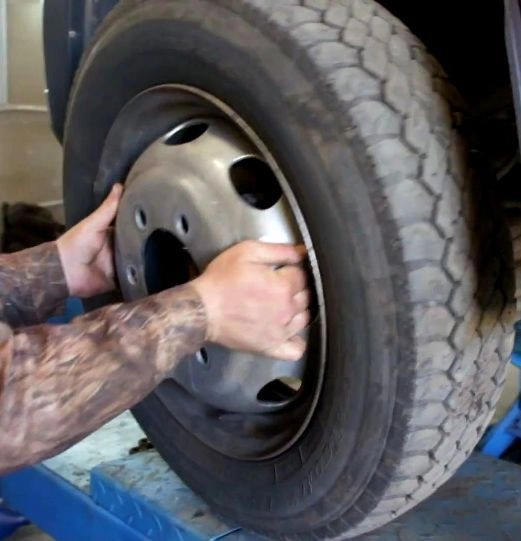
Removing the front wheel
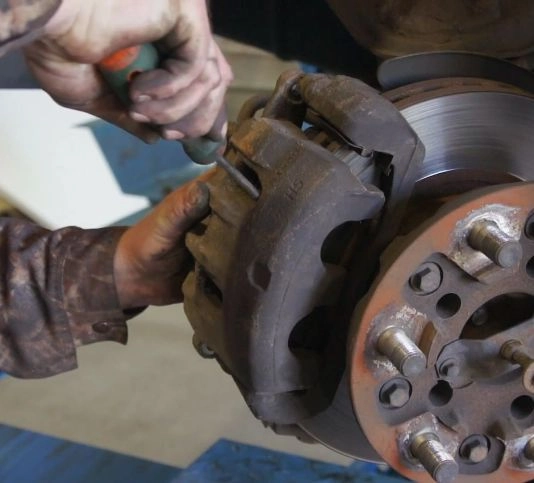
Using a large screwdriver, push down the pistons of the caliper cylinders to move the brake pads away from the disc
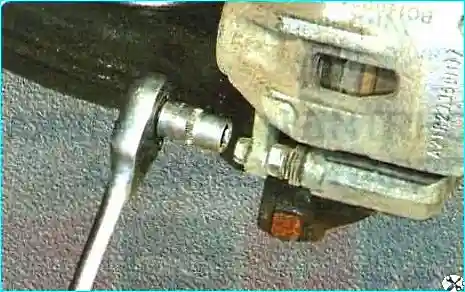
Loosen the tightening of the bolt securing the lower guide pin of the caliper
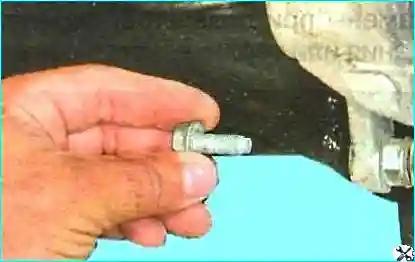
Unscrew the bolt
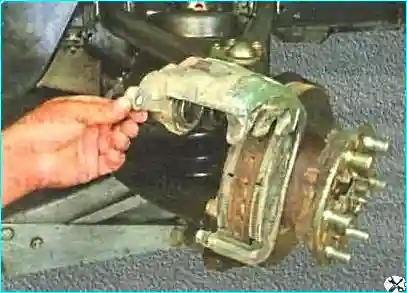
Lift the caliper up
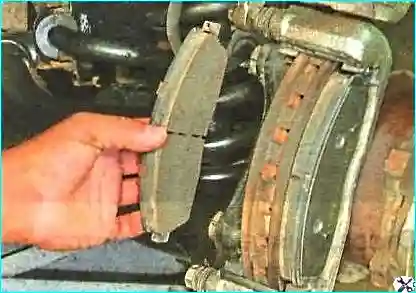
Removing the inner pad
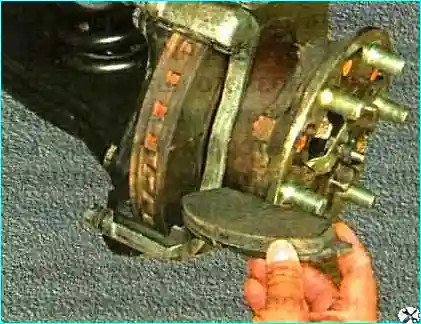
Removing the outer pad
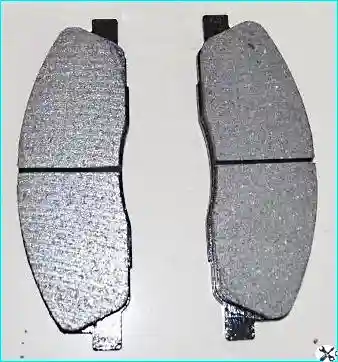
This is what the front brake pads look like
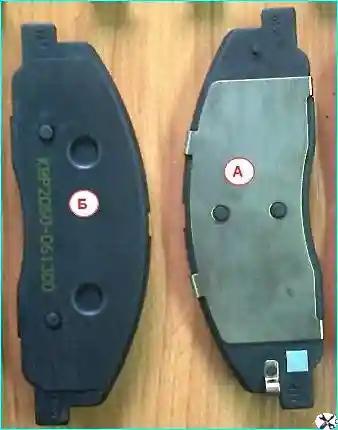
The inner "A" and outer "B" brake pads are different.
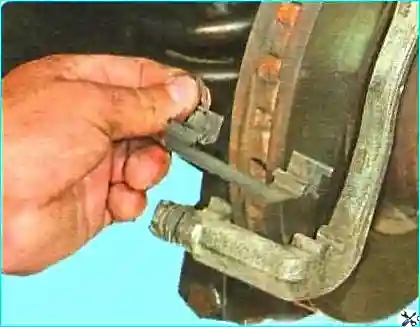
The inner pads are equipped with pressure plates, and the outer pads are equipped with spring wear limit indicators and have different catalog numbers.
Remove the lower and upper pressure springs of the pads and inspect them

Replace deformed or heavily corroded springs
Each time you replace the brake pads, be sure to check the condition of the protective rubber boots of the guide pin and movement of the caliper relative to the brake pad guide.
If movement is difficult, lubricate the caliper guide pins with grease.
To do this, remove the guide pin, lubricate it with grease, and then lubricate the protective cover of the pin with grease.
Lubricate the second guide pin and its cover in the same way. Install the guide pins in the reverse order of removal.
Replace the guide pin protective boots if they are hardened, deformed or torn.
Install the brake pads in the reverse order.
Apply anaerobic thread locker to the threaded portion of the guide pin mounting bolts.
After replacing worn brake pads with new ones, do not rush to drive onto busy highways right away.
It is possible that during the first intensive braking you will be unpleasantly surprised by the low efficiency of the brakes, although the pads are original.
Brake discs also wear out, and new pads touch them only with their edges, practically without braking.
Choose a quiet street or driveway without cars and brake smoothly several times so that the pads rub in and become fit over the entire surface.
At the same time, evaluate the effectiveness of the brakes.
Try not to brake sharply, at least for the first 100 km.
When unburned pads are heated strongly, the top layer of their linings “burns” and the brakes will not be maximally effective for a long time minimally effective.
We will consider replacing the rear brake pads in the article - Replacing the brake drum and pads of the rear wheels





